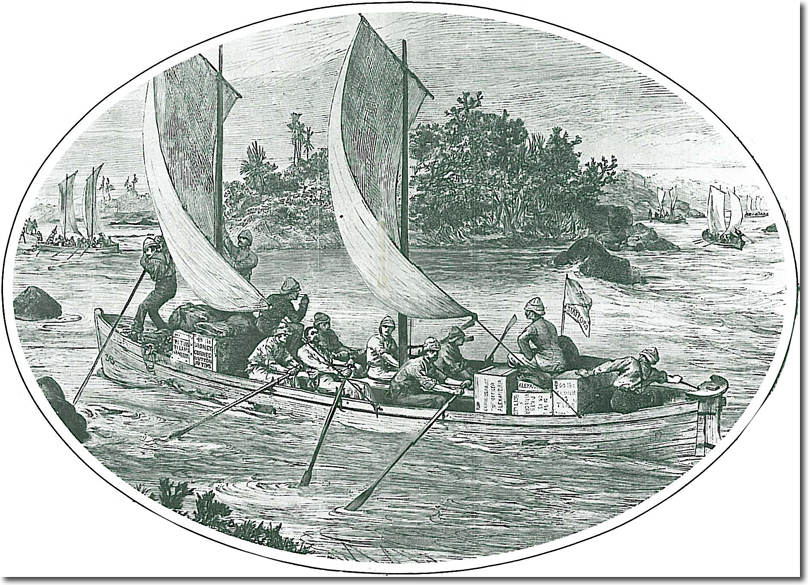|
|


|
|
The relief force that set out from Cairo
in October, 1884, under Sir Garnet
Wolseley might have saved Gordon - but
for the Nile. Most commanders would
have given the river with its rock-strewn
cataracts a wide berth and approached
Khartoum from the Red Sea. But
Wolseley, who had led a force up Canada's
raging Red River in 1870, was sure he
could beat the Nile. To his dismay, he
found that he could not.
There were no boats to move the 7,000 strong army over the 1,250 miles to Khartoum, and Wolseley was forced to delay until 800 boats were built. Then he had to wait for the arrival from overseas of skilled Canadian boatmen recruited to pilot his fleet. Wolseley seems to have imagined his troubles were over when the armada of little ships nosed out of Wadi Halfa on November 1st, but there was so little wind that the soldiers had to take to their oars to move the flotilla. In a short time the soldiers' hands became a mass of blist ers as they toiled against the fierce current. Progress was slow enough on the river but at the cataracts, where the river roared and boiled over jagged outcrops of black basalt, the entire force ground to a halt while the boats were first unloaded and then poled and hauled upstream. The expedition became a nightmarish round of rowing, sailing, poling, hauling, unloading, carrying and reloading. Again and again this routine was repeated. Wolseley was sick at heart. In public he maintained a brave front; in private he prayed desperately that the garrison would hold out until he arrived. |
Armed Forces | Art and Culture | Articles | Biographies | Colonies | Discussion | Glossary | Home | Library | Links | Map Room | Sources and Media | Science and Technology | Search | Student Zone | Timelines | TV & Film | Wargames